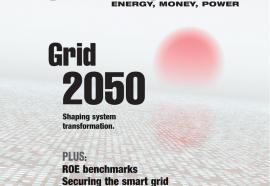Vendor Neutral
(August 2011) Shaw Group completes 500 MW combined cycle plant; Pattern Energy begins building Spring Valley wind farm; AEP, Duke and TVA team up on interstate transmission line; AEP and MidAmerican contract for Texas transmission projects; Alliant contracts Open Systems International for volt-VAR control system; Alstom buys into AWS Ocean Energy; Siemens acquires shares in PV manufacturer Semprius; Lockheed Martin introduces cyber security system; plus contracts and announcements involving Elster, Itron, Suzlon, Solon, Sensus, Westinghouse Electric, Morgan Lewis and others.







